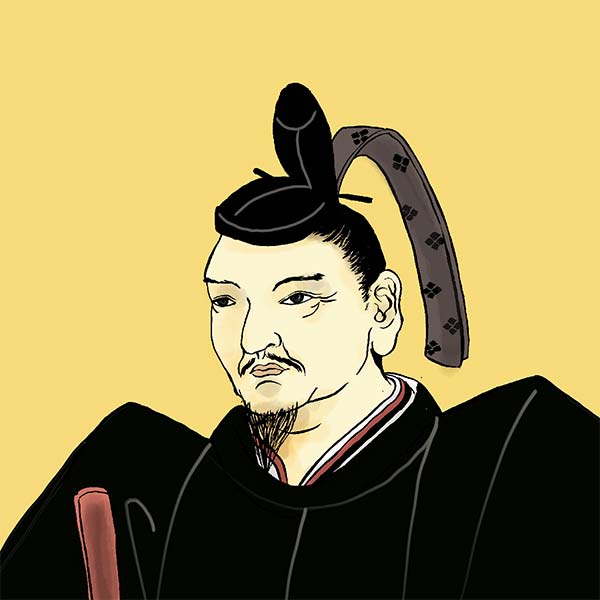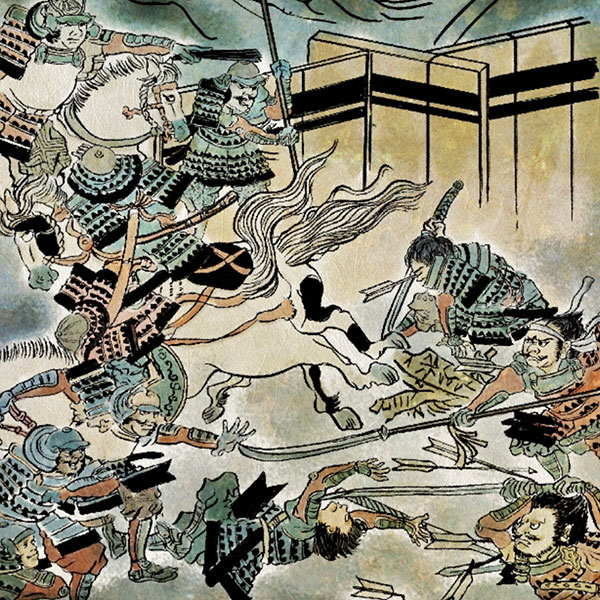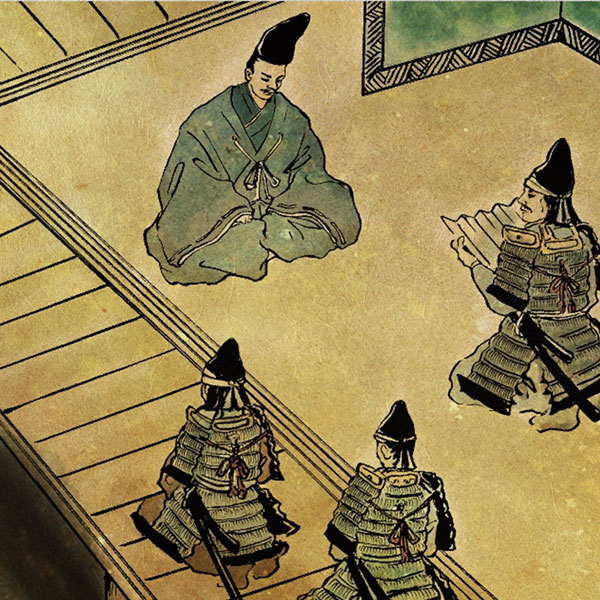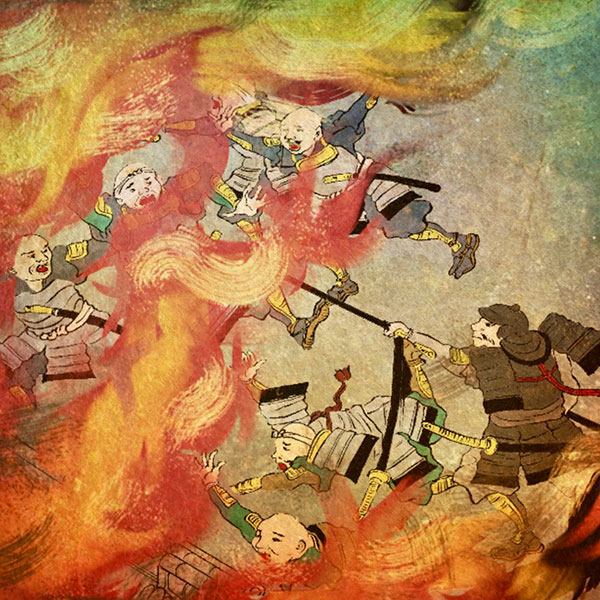Masamoto Hosokawa (1/2)The man who started the Sengoku period

Masamoto Hosokawa
- Article category
- biography
- name
- Masamoto Hosokawa (1466-1507)
- place of birth
- Kyoto
- Related castles, temples and shrines

Nijo Castle
- related incident
Japan's late Muromachi period, commonly known as the Sengoku period. It is said that the Sengoku period began with the Onin War. However, strictly speaking, the Ashikaga Shogun family remained powerful even after the Onin War ended. However, there was one person, Masamoto Hosokawa, who undermined the authority of the shogun. Masamoto installed a shogun that suited him, but this is said to have weakened the authority of the shogunate and ushered in the Sengoku period. This time, we will take a look at Masamoto Hosokawa.
Masamoto Hosokawa's father was a general in the Eastern Army during the Onin War, and his grandfather was a general in the Western Army.
Masamoto Hosokawa was born into the Hosokawa Kitcho family, the head family of the three Kanrei families of the Muromachi Shogunate: the Shiba family, the Hatakeyama family, and the Hosokawa family. His father was Katsumoto Hosokawa, a general in the Eastern Army during the Onin War.
Her mother is the daughter of Katsumoto's legal wife, Hiroki Yamana.
My mother's father, Hiroki Yamana, was present at the Kakichi Rebellion in which the sixth Muromachi shogunate shogun, Yoshinori Ashikaga, was killed and died in the aftermath. Therefore, the head of the Yamana family, Sozen Yamana, adopted the daughter of the deceased Hiki and married her to Katsumoto Hosokawa. Yamana Sozen was a daimyo who became the general of the Western Army during the Onin War.
In other words, Masamoto Hosokawa's father was Katsumoto Hosokawa, who became a general of the Eastern Army during the Onin War. His mother was the adopted daughter of Sozen Yamana, who became the general of the Western Army during the Onin War, and from Masamoto's point of view, Sozen was his grandfather-in-law.
Then there was the Onin War, which my father and grandfather fought against. After the Onin War, Japan during the Muromachi period was said to have entered the Warring States period. However, strictly speaking, Masamoto Hosokawa, who had grown up, was the one who started the Sengoku period.
Onin War and family succession
Masamoto Hosokawa was born in 1466 as the eldest son of Katsumoto Hosokawa, the head of the Hosokawa Kichicho family. Masamoto's childhood name was Soumeimaru, and his father, Katsumoto, had high expectations for him.
However, the year after his birth, the Onin War broke out. The Onin War began with a feud between feudal lords in various regions, and the army was divided into eastern and western armies, which fought in Kyoto.
In May 1473, halfway through the war, his father, Katsumoto Hosokawa, died of illness, and in the same year, Sozen Yamana also died of illness.
Following Katsumoto Hosokawa, Masamoto Hosokawa succeeded to the position of shugo daimyo of Tanba, Settsu, and Tosa provinces and the Hosokawa Kiccho family, when Masamoto was 8 years old. At a young age, Masamoto was at the helm with the support of Masakuni Hosokawa, the head of the Tenmaya family, a branch of the Hosokawa family.
On April 3, 1474, he made peace with Masatoyo Yamana (grandson of Sozen Yamana) of the Western Army, and the Onin War came to a temporary conclusion. However, the fighting itself did not end completely, and the Onin War is said to have ended in Bunmei 9 (1477).
In 1478, at the age of 13, he received the first character of Yoshimasa Ashikaga, the eighth shogun of the Muromachi shogunate, and began to call himself Masamoto.
However, this was the year after Genpuku. Motosada Naito, the governor of Tanba Province, did not approve of the Ichinomiya clan's exemption from annual tax, and killed about 30 members of the Ichinomiya clan. Daisuke Ichinomiya Miyauchi then kidnapped Masamoto Hosokawa and started a rebellion. Kenaga Ichinomiya, a member of the Ichinomiya clan, suppressed the uprising by defeating Daisuke Ichinomiya Miyauchi, but Masamoto Hosokawa was imprisoned for about four months.
The 9th Shogun Yoshinao and the subjugation of the Rokkaku family
Now, the 8th shogun, Yoshimasa Ashikaga, passed on the shogunate to his son. Yoshimasa Ashikaga was born to Yoshimasa and his legal wife Tomiko Hino. Thus, the position of shogun passed to the 9th shogun, Yoshinao Ashikaga. Masamoto Hosokawa was appointed Kanrei, but resigned (after 9 days in office) after the ceremony of inauguration as shogun.
By the way, there was a shugo daimyo named Rokkaku Takayori in Minami Omi, which is to the east of Kyoto. After the Onin War, Rokkaku Takayori saw the unstable times and planned to strengthen his own power. They sought to strengthen their support base by forcefully usurping temples and shrines and manors of court nobles and distributing them to the local people who supported them.
Shogun Yoshihisa Ashikaga decides to subjugate Takayori Rokkaku, tells Masamoto his secret intentions, and the two prepare to go to battle in secret. At this point, the general's authority had not diminished, and more than 20,000 soldiers gathered under him. Realizing that he was at a disadvantage, Takayori Rokkaku abandoned his residence, Kannonji Castle, and hid in Koka to resist. For this reason, Yoshihisa had to spend a year and a half at the camp in Omi, and gradually lost interest in politics.
In 1489, while still in power, the 9th Shogun Yoshihisa Ashikaga died of illness in Omi Province. Although he reigned for about 15 years, he was only 25 years old.
10th Shogun Yoshiki and Tomiko Hino
The 9th Shogun Yoshinao Ashikaga passed away due to illness, so the next Shogun must be chosen.
Let me briefly review General Ashikaga so far.
- 6th Shogun Yoshinori Ashikaga, 5th son of 3rd Shogun Yoshimitsu Ashikaga, assassinated during the Kakichi Rebellion
- The 7th Shogun Yoshikatsu Ashikaga was the eldest son of the 6th Shogun Yoshinori Ashikaga, but he died young after about two years on the throne.
- 8th Shogun Yoshimasa Ashikaga, second son of 6th Shogun Yoshinori Ashikaga, and a general during the Onin War.
- The 9th Shogun Yoshimasa Ashikaga, the eldest son of the 8th Shogun Yoshimasa Ashikaga. Died of illness at age 25
Yoshimasa Ashikaga's bloodline ended here because he had no successor. However, Yoshimasa had younger brothers.
Yoshinori Ashikaga, the third son of the 6th shogun Yoshinori Ashikaga...Originally, he was supposed to serve as a shogun until the 9th shogun Yoshinori came of age. It is also said that he was one of the causes of the Onin War.
Masatomo Ashikaga, the fourth son of the 6th Shogun Yoshinori Ashikaga...He went to Kanto to become Kamakura Kubo, an institution created by Takauji Ashikaga to govern the Kanto region, but was unable to enter due to confusion, and later became the founder of Horikoshi Kubo.
The 8th Yoshimasa Ashikaga had two younger brothers, so the shogun was chosen from one of the families. Masamoto Hosokawa was the son of Masatomo Ashikaga, who was known as Horikoshi Kubo, and supported Yoshizumi Ashikaga, who was a monk in Kyoto.
Tomiko Hino, who was the legal wife of the 8th Yoshimasa Ashikaga and was also involved in politics, supported Yoshitane, who was born between Yoshimi Ashikaga and Tomiko Hino's younger sister Ryoko. Masanaga Hatakeyama of the Hatakeyama family, one of the three Kanrei, also supported Yoshitane, so Yoshitane Ashikaga was chosen as the shogun. This is Yoshitane Ashikaga, the 10th Shogun.
Just before Yoshitane was chosen, the 8th generation Yoshimasa Ashikaga also died of illness. Yoshitane began to run the government with the support of Masanaga Hatakeyama and his father Yoshimi Ashikaga. However, within the shogunate, the power of Masanaga Hatakeyama and Yoshimi Ashikaga increased. Furthermore, after Yoshimi died, Masanaga Hatakeyama came to monopolize the power of the shogunate.
Tomiko Hino, who was the first to support Yoshitane, was not happy about this. Tomiko Hino took charge of politics after her husband, Yoshimasa Ashikaga, lost interest in politics. She tried to stabilize the government by supporting Yoshitane, who was formed between Yoshimasa's younger brother Yoshimasa and her younger sister Ryoko Hino, but he gradually became estranged from the shogunate.
During this time, Masamoto Hosokawa himself, who supported Yoshizumi Ashikaga, distanced himself from the shogunate.
Shugendo and the issue of family headship
Now, Masamoto Hosokawa conducted politics as the leader of the Hosokawa Kitcho family, and when Yoshitane Ashikaga became shogun, he distanced himself from the shogunate. We have looked at the public side of politicians, but the private side also has its own characteristics. It is characterized by believing in the Yamabushi faith, practicing Shugendo, and wandering around the country to learn Atago law and itako. This can also be seen as a belief in inhuman powers. On the other hand, it is also said that Shugensha who traveled from country to country devoted themselves to their faith in order to make use of the unique knowledge they possessed.
- related incident

- WriterTomoyo Hazuki(Writer)I have loved history and geography since my student days, and have enjoyed visiting historical sites, temples and shrines, and researching ancient documents. He is especially strong in medieval Japanese history and European history in world history, and has read a wide range of things, including primary sources and historical entertainment novels. There are so many favorite military commanders and castles that I can't name them, but I especially like Hisashi Matsunaga and Mitsuhide Akechi, and when it comes to castles, I like Hikone Castle and Fushimi Castle. Once you start talking about the lives of warlords and the history of castles, there's a side of you that can't stop talking about them.






